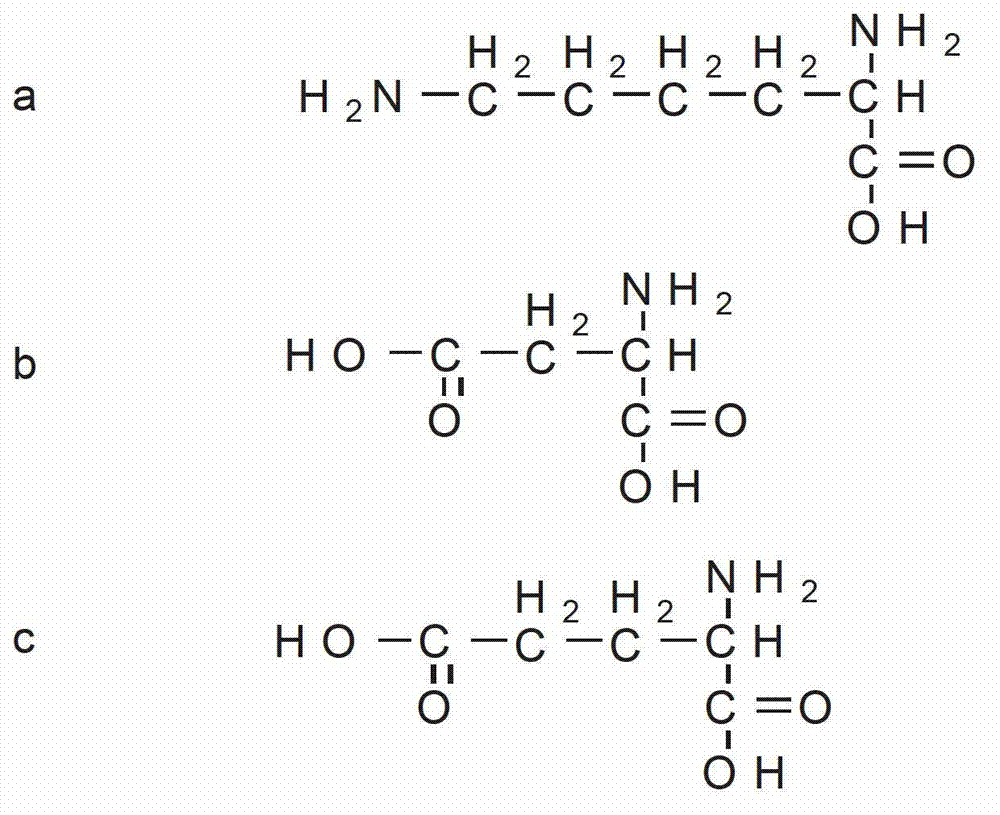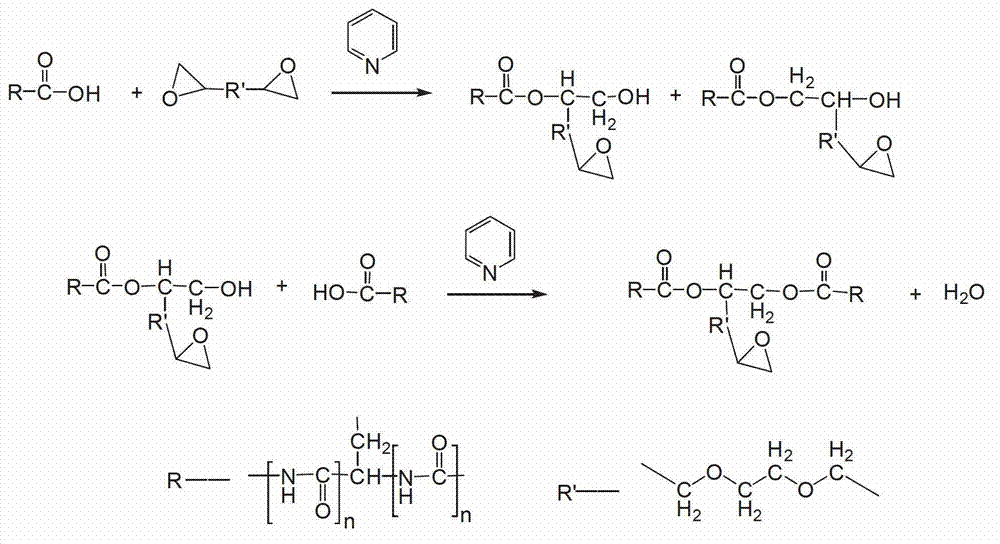Hemostatic or anticoagulant collagen material
A collagen material and collagen technology, which is applied in anticoagulation treatment, peptide preparation method, type of packaging items, etc., can solve the problems of difficult dressing change, no anti-edema, poor toughness, etc., and is conducive to tissue adsorption and entry growth. Effect
- Summary
- Abstract
- Description
- Claims
- Application Information
AI Technical Summary
Problems solved by technology
Method used
Image
Examples
Embodiment Construction
[0039] 1. Under weakly acidic to weakly alkaline conditions (pH6.0-8.0), react collagen with glutaraldehyde (volume concentration 0.1%-2%). The dosage ratio of collagen and glutaraldehyde here is: 1g Collagen plus 1% (v / v) glutaraldehyde 50mL, the reaction process is as follows figure 2 shown. Reaction times range from 30 minutes to 14 days. The resulting collagen substrate is negatively charged in solution and has anticoagulant properties. For example, bovine pericardium was placed in 0.6% (v / v) glutaraldehyde solution in PBS buffer, pH 7.4, for 3 days. Or under alkaline conditions (pH8.0-10.5), react collagen with ethylene glycol diglycidyl ether according to the ratio of 1g collagen plus 2% (v / v) ethylene glycol diglycidyl ether 50mL, ethylene glycol diglycidyl ether The epoxy group in alcohol diglycidyl ether reacts with the ε-amino group of lysine, and the reaction process is as follows image 3 shown. Reaction times range from 1 hour to 14 days. After the reaction ...
PUM
 Login to View More
Login to View More Abstract
Description
Claims
Application Information
 Login to View More
Login to View More - R&D
- Intellectual Property
- Life Sciences
- Materials
- Tech Scout
- Unparalleled Data Quality
- Higher Quality Content
- 60% Fewer Hallucinations
Browse by: Latest US Patents, China's latest patents, Technical Efficacy Thesaurus, Application Domain, Technology Topic, Popular Technical Reports.
© 2025 PatSnap. All rights reserved.Legal|Privacy policy|Modern Slavery Act Transparency Statement|Sitemap|About US| Contact US: help@patsnap.com



